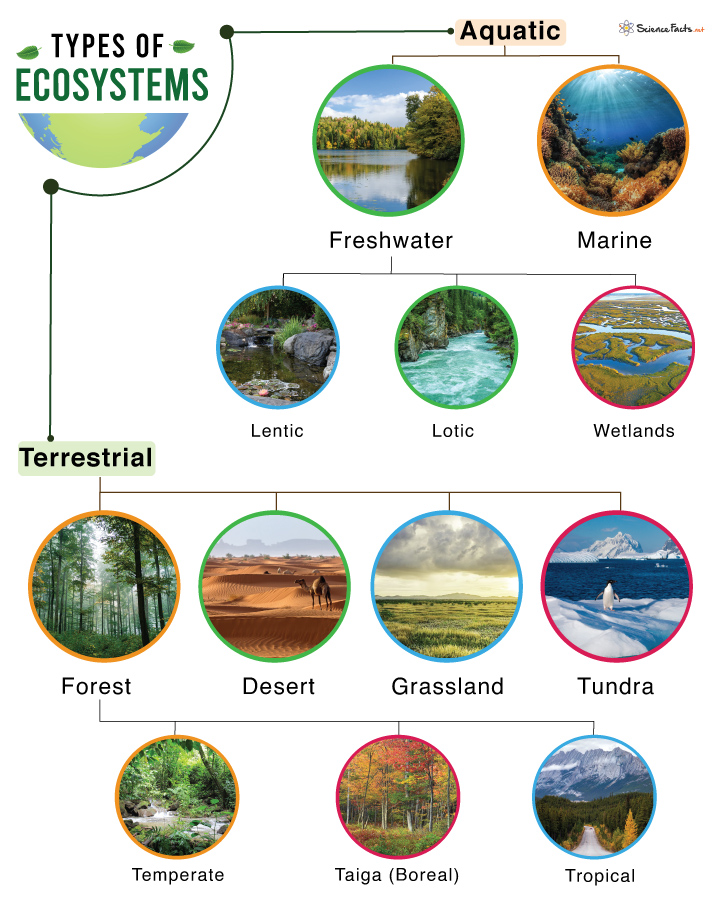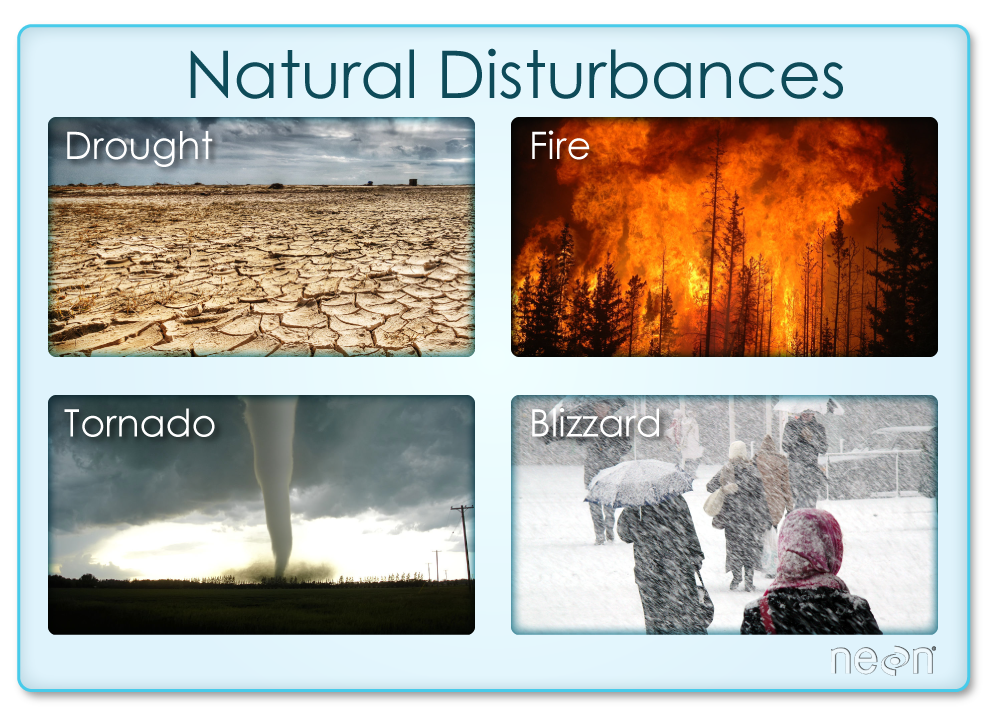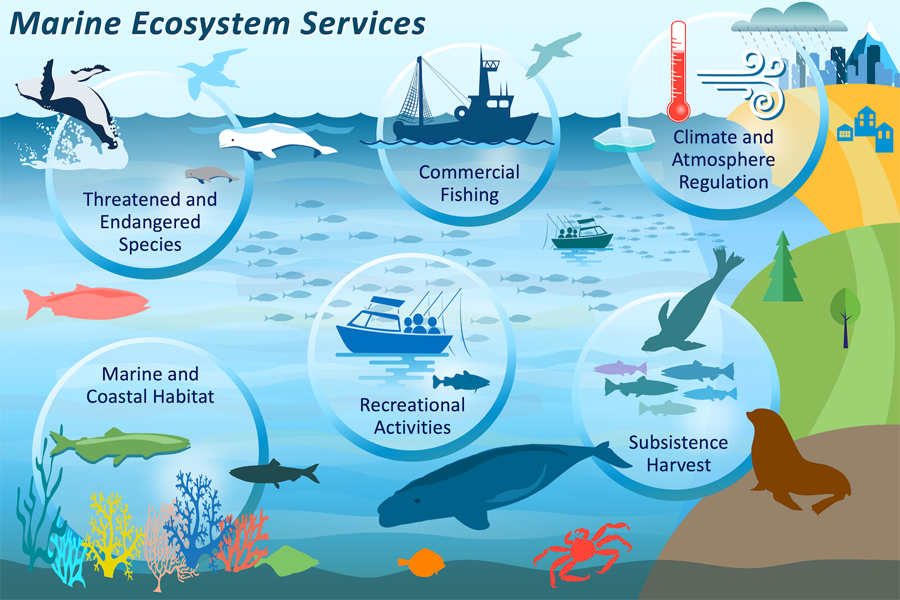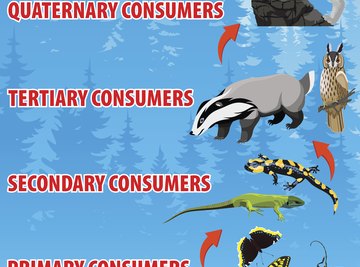Topic ecosystem definition in biology: Discover the fascinating world of ecosystems, where biology defines the intricate networks of life and their environments, unlocking the secrets of nature"s balance.
Table of Content
- How is an ecosystem defined in biology?
- Understanding Ecosystems in Biology
- Types of Ecosystems: Aquatic, Terrestrial, and More
- Components of an Ecosystem: Biotic and Abiotic Factors
- Energy Flow and Nutrient Cycles in Ecosystems
- Importance of Ecosystem Services to Humans
- YOUTUBE: What is an Ecosystem?
- Threats to Ecosystems and Conservation Efforts
- Examples of Ecosystems: From Rainforests to Deserts
- Ecosystem Interactions: Predation, Competition, and Symbiosis
- Impact of Climate Change on Ecosystems
- Restoration Ecology: Reviving Damaged Ecosystems
How is an ecosystem defined in biology?
An ecosystem is defined in biology as:
- A geographic area where plants, animals, and other organisms coexist with each other and their surrounding environment.
- An intricate network of interactions between living organisms and their physical environment.
- A system in which energy flows through various levels, starting with primary producers (such as plants), and passing through consumers (such as animals) and decomposers (such as bacteria and fungi).
- A system that involves biotic factors (living organisms) and abiotic factors (non-living components of the environment, such as temperature, sunlight, water availability, and soil type).
- An ecosystem can be of various types, including terrestrial (on land), marine (in oceans and seas), and aquatic (in freshwater bodies like lakes and rivers).
- Within an ecosystem, organisms interact with each other through processes such as predation, competition, and symbiosis.
- Ecosystems are dynamic and can change over time due to natural events, human activities, and other factors.
- The study of ecosystems and their dynamics falls under the field of ecology, which aims to understand the relationships between organisms and their environment.
READ MORE:
Understanding Ecosystems in Biology
An ecosystem in biology is a community of living organisms interacting with their physical environment. This dynamic system includes both biotic (living) and abiotic (non-living) components, working together to form a unique and balanced network.
- Biotic Components: These include all living things in an ecosystem, from plants and animals to fungi and microorganisms. They play various roles as producers, consumers, and decomposers.
- Abiotic Components: These are the non-living factors that influence an ecosystem, such as sunlight, water, soil, temperature, and air.
Ecosystems vary in size and can be as large as a desert or as small as a pond. Despite their diversity, all ecosystems follow basic principles, such as energy flow and nutrient cycling, ensuring the survival and productivity of the community.
- Energy Flow: Energy in an ecosystem flows from the sun to producers and then to consumers, forming a food chain or web.
- Nutrient Cycling: Nutrients circulate within an ecosystem through biological, geological, and chemical processes, vital for maintaining the health of the ecosystem.
Understanding ecosystems in biology helps us appreciate the complexity and interdependence of life on Earth, emphasizing the importance of conservation and sustainable management practices to protect these vital systems.

Types of Ecosystems: Aquatic, Terrestrial, and More
Ecosystems are broadly categorized into two main types: aquatic and terrestrial. Each type hosts diverse habitats, species, and environmental conditions, showcasing the variety of life on Earth.
- Aquatic Ecosystems: These are water-based ecosystems and are divided into freshwater (lakes, rivers, ponds, and wetlands) and marine (oceans, coral reefs, and estuaries) ecosystems. Aquatic ecosystems are crucial for water cycling, climate regulation, and supporting a vast array of biodiversity.
- Terrestrial Ecosystems: These are land-based ecosystems and include forests, deserts, grasslands, and tundra. Each terrestrial ecosystem is defined by its climate, soil type, and the organisms that inhabit it. They play a key role in carbon sequestration, soil formation, and providing habitats for species.
Aside from these primary categories, ecosystems can also be identified as:
- Artificial Ecosystems: These are human-made, such as urban or agricultural ecosystems, designed to provide specific services or goods.
- Mixed Ecosystems: Such as agroforestry systems that combine elements of both natural and artificial ecosystems, leveraging the benefits of each for sustainable management.
Understanding the types of ecosystems and their specific characteristics helps in comprehending the global ecological balance and the necessity for preserving each unique environment.
Components of an Ecosystem: Biotic and Abiotic Factors
An ecosystem is a complex network of interdependent components, categorized into biotic (living) and abiotic (non-living) factors. These elements interact in a balanced manner, supporting the ecosystem"s structure and function.
- Biotic Factors: These include all the living components of an ecosystem, such as plants, animals, fungi, and microorganisms. They are further divided into:
- Producers (autotrophs): Organisms that synthesize their own food from sunlight or chemical energy.
- Consumers (heterotrophs): Organisms that obtain energy by consuming other organisms, divided into herbivores, carnivores, omnivores, and decomposers.
- Decomposers: Microorganisms and fungi that break down dead organic matter, recycling nutrients back into the ecosystem.
- Abiotic Factors: These are the non-living components that influence an ecosystem, such as:
- Climate: Temperature, precipitation, and other climatic conditions.
- Water: Availability of fresh or saline water, which is crucial for all living organisms.
- Soil: Types, composition, and quality, affecting the types of plants that can grow.
- Light: Solar energy, which is essential for photosynthesis in plants.
- Air: Composition of the atmosphere, important for respiration.
Understanding the roles and interactions between biotic and abiotic factors is essential for studying ecosystems. These interactions define the habitat"s conditions, influencing the diversity and abundance of life within it.

Energy Flow and Nutrient Cycles in Ecosystems
The sustainability of ecosystems relies on the continuous flow of energy and the cycling of nutrients. These processes are fundamental to the functioning of ecosystems, supporting the complex web of life within them.
- Energy Flow: Energy in ecosystems flows in a one-way stream, from the sun to producers and then to various levels of consumers. This flow is depicted in food chains and more complex food webs, illustrating how energy is transferred through different trophic levels:
- Producers (autotrophs) convert solar energy into chemical energy through photosynthesis.
- Consumers (heterotrophs) ingest this energy by feeding on producers or other consumers.
- Decomposers break down dead organisms, releasing nutrients back into the ecosystem and completing the energy cycle.
- Nutrient Cycles: Nutrients such as carbon, nitrogen, and phosphorus move through ecosystems in biogeochemical cycles. These cycles involve the transfer of elements from the abiotic environment to living organisms and back, ensuring the availability of essential nutrients for life processes:
- The Carbon Cycle: Involves the exchange of carbon among the biosphere, pedosphere, geosphere, hydrosphere, and atmosphere of the Earth.
- The Nitrogen Cycle: Describes the movement of nitrogen between the atmosphere, soil, and organisms, crucial for synthesizing proteins and nucleic acids.
- The Phosphorus Cycle: Moves phosphorus through the lithosphere, hydrosphere, and biosphere, vital for cellular energy transfer and genetic material.
Understanding the principles of energy flow and nutrient cycles is essential for grasping how ecosystems function and maintain their balance, demonstrating the interconnectedness of all life forms and their environments.
Importance of Ecosystem Services to Humans
Ecosystem services are the benefits that natural ecosystems provide to humanity, supporting our survival and quality of life. These services are often taken for granted but are crucial for our well-being and the planet"s health.
- Provisioning Services: These include the supply of food, water, timber, and fiber, all derived directly from ecosystems for human use. For example, forests provide wood for construction and plants for food and medicine.
- Regulating Services: Ecosystems play a key role in regulating the environment, including air quality, climate, water purification, and disease control. Wetlands, for instance, filter pollutants from water, while forests can store carbon, helping to regulate the climate.
- Cultural Services: Natural landscapes hold cultural, spiritual, and recreational value for many people. Activities such as hiking, birdwatching, and simply enjoying the beauty of nature contribute to our mental and physical well-being.
- Supporting Services: These are fundamental for the production of all other ecosystem services, including soil formation, photosynthesis, nutrient cycling, and water cycling. These processes allow ecosystems to function and support life on Earth.
The importance of ecosystem services to humans cannot be overstated. Protecting and maintaining healthy ecosystems is not only vital for biodiversity but also for the continued provision of the services upon which human societies depend.

What is an Ecosystem?
Dive into the fascinating world of ecosystems and discover the intricate web of life that exists in every corner of our planet. Explore the different habitats, the incredible diversity of species, and learn how every organism contributes to the balance of this beautiful interconnected system. Watch the video to gain a deeper understanding of the importance of preserving and protecting these precious ecosystems.
Ecology Definition, Examples, Explanation
Embark on an enlightening journey into the realm of ecology and unravel the complex relationships that shape our natural world. From understanding the effects of climate change to discovering the incredible adaptations of organisms, this video delves into the intricate science behind how organisms interact with each other and their environment. Get ready to witness the awe-inspiring beauty and resilience of nature through the lens of ecology.
Threats to Ecosystems and Conservation Efforts
Ecosystems around the world are facing unprecedented threats that endanger their stability, biodiversity, and the services they provide to humanity. Understanding these threats is the first step towards mitigating their impact and conserving our natural heritage.
- Habitat Destruction: Urban expansion, agriculture, and deforestation lead to the fragmentation and loss of habitats, which is the primary cause of biodiversity loss.
- Pollution: Water, air, and soil pollution from industrial activities, agriculture, and waste disposal disrupt ecosystems and poison wildlife.
- Climate Change: Rising temperatures and changing weather patterns affect the distribution of species and the functioning of ecosystems, making it harder for wildlife to survive.
- Invasive Species: Non-native species introduced by human activity can outcompete, prey on, or bring diseases to native species, destabilizing ecosystems.
- Overexploitation: Unsustainable fishing, hunting, and logging deplete resources faster than they can regenerate, leading to the collapse of ecosystems.
In response to these threats, conservation efforts are being intensified worldwide. These include:
- Establishing protected areas to conserve critical habitats and species.
- Implementing sustainable management practices in agriculture, forestry, and fisheries.
- Restoring degraded ecosystems to their natural state.
- Reducing greenhouse gas emissions to combat climate change.
- Engaging communities in conservation to ensure long-term success and sustainability.
Conservation efforts are crucial for safeguarding ecosystems and ensuring the well-being of future generations. By addressing the root causes of environmental degradation, we can protect the planet"s biodiversity and the essential services it provides.
Examples of Ecosystems: From Rainforests to Deserts
Ecosystems are incredibly diverse, ranging from lush rainforests teeming with life to sparse deserts barely sustaining existence. Here are examples of some of the most distinctive ecosystems on Earth, each with its unique characteristics and inhabitants.
- Tropical Rainforests: Known for their high biodiversity, tropical rainforests are home to many species of plants, animals, and insects. They are found near the equator and receive a high amount of rainfall annually.
- Deserts: Characterized by their dry conditions, deserts can be hot or cold. They are home to specially adapted plants and animals that can survive with minimal water.
- Grasslands: Found on every continent except Antarctica, grasslands are dominated by grasses and have few trees. They support a wide variety of herbivores, as well as predators that feed on them.
- Coral Reefs: Often called the "rainforests of the sea," coral reefs are rich in biodiversity. They are found in warm, shallow waters and support thousands of marine species.
- Arctic Tundra: Located at the Earth"s northernmost regions, the arctic tundra is a cold, treeless plain. It is known for its permafrost and supports wildlife adapted to extreme cold.
These ecosystems, among others, illustrate the vast array of environments that support life on Earth. Each ecosystem plays a critical role in the global ecological balance, providing unique services and benefits to the planet.

Ecosystem Interactions: Predation, Competition, and Symbiosis
Interactions within ecosystems are fundamental to the survival and development of species. Predation, competition, and symbiosis are three key types of interactions that significantly influence the structure and function of ecosystems.
- Predation: This is an interaction where one organism, the predator, hunts and consumes another organism, the prey. Predation plays a crucial role in controlling population sizes and maintaining species diversity within ecosystems.
- Competition: Occurs when organisms vie for the same resources, such as food, water, or territory. Competition can be intra-specific, between members of the same species, or inter-specific, between different species. It influences the distribution and abundance of species within an ecosystem.
- Symbiosis: Refers to a close and long-term biological interaction between two different biological organisms. Symbiotic relationships can be mutualistic, where both species benefit; commensalistic, where one benefits without affecting the other; or parasitic, where one benefits at the expense of the other.
- Mutualism: An example is the relationship between bees and flowering plants, where bees get nectar for food while helping in pollination.
- Commensalism: An example is barnacles attaching to whales. The barnacles get transport to food-rich waters, while the whale is unaffected.
- Parasitism: Tapeworms in the intestines of various animals, where the worm benefits while the host is harmed.
Understanding these interactions is vital for studying ecosystems, as they highlight the complex interdependencies between species and their environment. These relationships shape the dynamic nature of ecosystems, driving evolutionary changes and affecting biodiversity.
Impact of Climate Change on Ecosystems
Climate change poses significant threats to ecosystems worldwide, altering habitats, species distributions, and the processes that underpin the natural world. The impacts are far-reaching, affecting biodiversity, ecosystem services, and the global environment.
- Shifts in Species Distribution: As temperatures rise, species may migrate to cooler areas, altering community compositions and potentially leading to species extinctions where migration is not possible.
- Changes in Phenology: The timing of natural events, such as flowering, breeding, and migration, is shifting. This can disrupt ecological interactions, such as pollination and food web dynamics.
- Increased Frequency of Extreme Weather Events: Storms, droughts, and wildfires, exacerbated by climate change, can destroy habitats and put additional stress on ecosystems.
- Ocean Acidification: The absorption of increased levels of CO2 by the oceans is causing them to become more acidic, affecting marine ecosystems and the species that depend on them, particularly organisms with calcium carbonate shells or skeletons.
- Loss of Habitat: Melting ice caps and rising sea levels result in the loss of polar and coastal habitats, while forests are impacted by increased temperatures and changing rainfall patterns.
The need for robust conservation and mitigation strategies is urgent to protect ecosystems and their services from the adverse effects of climate change. By understanding and addressing the impacts of climate change, we can work towards preserving the planet"s biodiversity and ensuring a sustainable future for all.
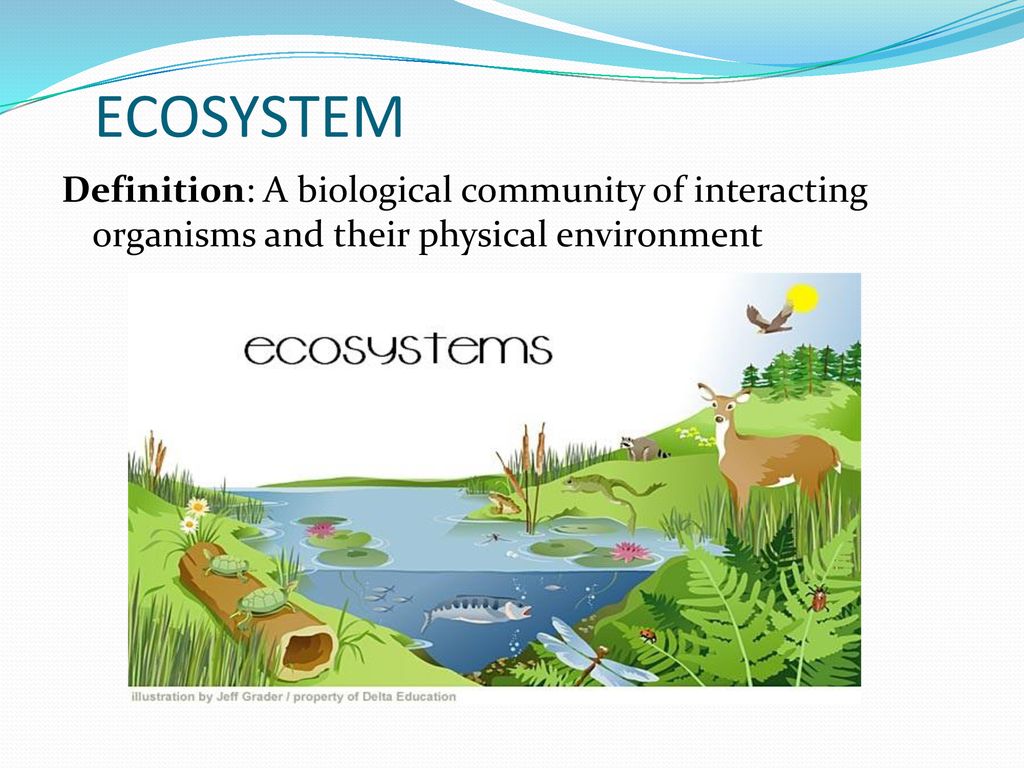
READ MORE:
Restoration Ecology: Reviving Damaged Ecosystems
Restoration ecology is a branch of ecology focused on the recovery of degraded, damaged, or destroyed ecosystems and habitats to a condition as similar as possible to their natural state. This vital field employs various strategies to revive ecosystems, aiming to restore biodiversity, ecosystem services, and ecological functions.
- Reforestation and Afforestation: Planting trees in deforested or barren areas to rebuild forest ecosystems, increase biodiversity, and sequester carbon dioxide.
- Wetlands Restoration: Rehabilitating wetlands to improve water filtration, provide habitat for species, and enhance flood protection.
- Invasive Species Removal: Eradicating or controlling non-native species that threaten native biodiversity and ecosystem health.
- Soil Erosion Control: Implementing measures to prevent soil erosion, such as planting vegetation, building terraces, and creating barriers.
- Stream and River Restoration: Modifying or removing dams, restoring natural flow patterns, and replanting riparian zones to improve water quality and habitat.
Restoration ecology not only focuses on the ecological aspects but also involves socio-economic elements, recognizing the interconnectedness of human and ecological health. Through collaborative efforts, restoration projects aim to engage communities, foster sustainable land use practices, and ultimately enhance the resilience of ecosystems against future challenges.
Exploring ecosystems reveals the intricate web of life and its resilience. Understanding these biological networks fosters appreciation and urgency in conserving our planet"s precious and dynamic natural systems for future generations.
